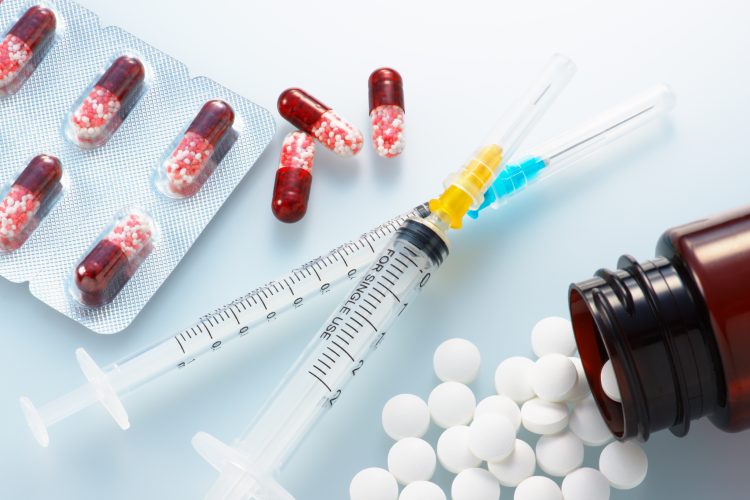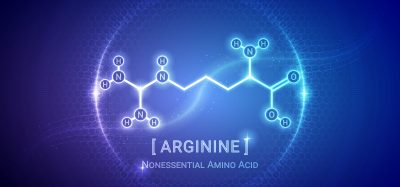From injections to pills: oral peptides set to transform drug development
Posted: 12 August 2025 | Dr Santosh Kulkarni (Vice President - Medicinal Chemistry) | No comments yet
Oral peptide-based drugs are set to revolutionise the pharmaceutical industry, overcoming the long-standing challenge of poor bioavailability. Santosh Kulkarni reveals how new breakthroughs in drug discovery and delivery offer the potential for more convenient, effective treatments for a range of conditions – without the need for injections.


The past few years have seen a boom in the market for protein- and peptide-based drugs, with the global market for peptide-based drugs expected to reach approximately $80 billion by 2032.1 The primary reason is that peptide-based drugs can be highly effective,2 leading to fewer off-target interactions and excellent biocompatibility. However, some of the major issues with these potentially game-changing therapeutic agents include their short lifespan within the body (they are prone to hydrolysis and enzymatic degradation) and their poor oral bioavailability, which is often between 1 and 2 percent.
To date, this poor oral bioavailability2 has meant that peptides have been administered parenterally (ie, via intravenous injection). Not only has the technology for successful oral administration been unavailable, but the medical need outweighed the drawbacks of regular injections; notably the peptide insulin3 has saved tens of millions of lives over the last 100 years, despite its delivery requiring injection. However, recent advances in the development of peptide-based drugs have led to improvements in peptide solubility and oral bioavailability for both linear and cyclic peptides, with several drugs being approved or entering clinical trials. For example, orally bioavailable PCSK9 inhibitor, Enlicitide (MK-0616), is currently in Phase III trials for treatment of adult hypercholesterolemia. Similarly, Icotrokinra (JNJ-2113),4 an orally administered peptide-based treatment for psoriasis, is currently also in Phase III trials.
Strategies for oral bioavailability of peptides
There are several strategies for improving oral bioavailability of peptides that are largely aimed at chemically altering the amino acids in the chain, causing cyclisation which aids delivery of the peptide to the site of interest. In addition, formulation strategies have also been explored for improving the oral bioavailability of peptides.
Automation now plays a central role in discovery. From self-driving laboratories to real-time bioprocessing
This report explores how data-driven systems improve reproducibility, speed decisions and make scale achievable across research and development.
Inside the report:
- Advance discovery through miniaturised, high-throughput and animal-free systems
- Integrate AI, robotics and analytics to speed decision-making
- Streamline cell therapy and bioprocess QC for scale and compliance
- And more!
This report unlocks perspectives that show how automation is changing the scale and quality of discovery. The result is faster insight, stronger data and better science – access your free copy today
Altering peptides at the amino-acid level
While the strategies for optimisation of small molecules are well established, such as adjusting lipophilicity, installation of (bio)isosteres and using prodrugs, similar strategies for use in peptides are far less developed. However, significant work has taken place in this area, which is now levelling the playing field.
Peptide sequences can be tailored through chemical modifications that impact their in vivo behaviour and physicochemical properties.
Peptide sequences can be tailored through chemical modifications that impact their in vivo behaviour and physicochemical properties. In particular, the improvement of therapeutic half-life5 through incorporation of non-natural amino acids, D-amino acids, PEGylation, N- and C-terminal modifications, and attachment on the side chains has afforded an extended therapeutic window of activity in vivo, leading to dosing regimens that are comparable to those of small molecules. Of these, modification of peptide sequences and attachment of lipids to enhance binding to albumin6 or other proteins have proven effective strategies to improve peptide half-life.
Cyclic peptides
Cyclic peptides are receiving increased attention7 and offer significant potential to address the challenges of peptide-based therapeutics. As with all peptides, when administered orally they are rapidly digested and/or have low absorption in the GI tract. However, these issues can sometimes be circumvented, for example through N-alkylation,8 inclusion of D-amino acids or use of disulfide, ring closing metathesis (RCM) or lactam formation as cyclisation approaches.7 In addition, the use of cyclic peptides in combination with some of the other outlined strategies for oral bioavailability paves the way for significant advances in drug discovery and development.
Nanoparticles
Nanoparticles (NPs) are defined as solid particles between one and 100nm in size that have colloidal properties when dispersed in an aqueous phase. It has consistently been shown that use of NPs can enhance solubility of poorly soluble compounds,9 including peptides,10 eg, through adjusting interaction with mucous barriers in the small intestine,11 blocking enzyme metabolism or enabling colon-specific drug delivery. Many examples of NP-based peptide drugs are currently under investigation12 for targeted delivery across the blood–brain barrier as well as in the treatment of breast cancer.
Permeation enhancers
Permeation enhancers (PEs) are designed to facilitate passage of the peptide through the skin or other barriers, thereby enhancing absorption of the drug.
Permeation enhancers (PEs) are designed to facilitate passage of the peptide through the skin or other barriers, thereby enhancing absorption of the drug. In the case of oral peptide medications, PEs are incorporated to alter the integrity of the intestinal epithelial barrier. These formulations often include medium-chain fatty acid-based systems, bile salts, acyl carnitines and the chelating agent EDTA.13 However, while these approaches can provide benefit in the treatment of indications, there are limitations: fasting is often required before and after drug administration (such as with the GLP-1 receptor agonist Rybelsus,14 which contains salcaprozate sodium (SNAC) as the PE) and some have raised safety concerns due to the potential for irreversible intestinal epithelium damage.13
Self-emulsifying drug delivery systems
Self-emulsifying drug delivery systems (SEDDS) comprise mixtures of lipids, surfactants and co-solvent that, when dispersed in gastrointestinal fluid, form emulsions and microemulsions. These can overcome barriers to absorption by providing protection from metabolism and improving penetration through the intestinal mucus layer. Currently cyclosporin A (Sandimmune/Neoral®)15 is formulated with SEDDS, which has an impressive bioavailability of 20–40 percent.
What does the future hold?
The field of peptide-based therapeutics is both old, with the first peptide-based drug (insulin) developed over 100 years ago, and young at the same time, with new modalities and classes of compounds continuously being developed. Due to the advances in bioavailability of peptides, peptide-based therapeutics are currently at the cusp of a revolution and will undoubtedly be an important modality for addressing unmet medical need and treatment of diseases in the future.
Peptides and Sai Life Sciences
Sai Life Sciences is a leader in the field of peptides and peptide-based therapeutics and is well-placed to support research and drug development efforts. With expertise in peptide synthesis, analysis, biological screening, ADME-PK characterization and storage, as well as formulation development, we can develop innovative medicines faster.
References
- Rossino G, Marchese E, Galli G, et al. Peptides as Therapeutic Agents: Challenges and Opportunities in the Green Transition Era. Molecules, 28 (20), 7165-7203, 2023. https://doi.org/10.3390/molecules28207165
- Chen G, Kang W, Li W, et al. Oral delivery of protein and peptide drugs: from non-specific formulation approaches to intestinal cell targeting strategies. Theranostics, 12 (3), 1419-1439, 2022. https://doi.org/10.7150/thno.61747
- Levy M. Insulin Development and Commercialization, American Chemical Society. https://www.acs.org/education/whatischemistry/landmarks/insulin.html (Accessed March 2025).
- Icotrokinra delivered an industry-leading combination of significant skin clearance with demonstrated tolerability in a once daily pill in Phase 3 topline results. Johnson & Johnson. https://www.jnj.com/media-center/press-releases/icotrokinra-delivered-an-industry-leading-combination-of-significant-skin-clearance-with-demonstrated-tolerability-in-a-once-daily-pill-in-phase-3-topline-results (Accessed March 2025).
- Mathur D, Prakash S, Anand P, et al. PEPlife: A Repository of the Half-life of Peptides. Sci. Rep., 6, 36617, 2016. https://doi.org/10.1038/srep36617
- Menacho-Melgar R, Decker JS, Hennigan JN, Lynch MD. A review of lipidation in the development of advanced protein and peptide therapeutics. J. Contr. Release., 295 (10), 1-12. https://doi.org/10.1016/j.jconrel.2018.12.032
- Merz ML, Habeshian S, Li B, et al. De novo development of small cyclic peptides that are orally bioavailable. Nat. Chem. Biol., 20, 624-633, 2024. https://doi.org/10.1038/s41589-023-01496-y
- Räder AFB, Reichart F, Weinmüller M, Kessler H. Improving oral bioavailability of cyclic peptides by N-methylation. Bioorg. Med. Chem., 26 (10), 2766-2773, 2018. https://doi.org/10.1016/j.bmc.2017.08.031
- Cao S-J, Xu S, Wang H-M, et al. Nanoparticles: Oral Delivery for Protein and Peptide Drugs. AAPS PharmSciTech, 20, 190, 2019. https://doi.org/10.1208/s12249-019-1325-z
- US Patent US9949924B2. Methods and compositions for oral administration of protein and peptide therapeutic agents. https://patents.google.com/patent/US9949924B2/en
- Ruiz-Gatón L, Espuelas S, Larrañeta E, et al. Pegylated poly(anhydride) nanoparticles for oral delivery of docetaxel. Eur. J. Pharm. Sci., 118, 165-175, 2018. https://doi.org/10.1016/j.ejps.2018.03.028
- Sharma R, Borah SJ, Bhawna, et al. Functionalized Peptide-Based Nanoparticles for Targeted Cancer Nanotherapeutics: A State-of-the-Art Review. ACS Omega, 7 (41), 36092–36107, 2022. https://doi.org/10.1021/acsomega.2c03974
- McCartney F, Gleeson JP, Brayden DJ. Safety concerns over the use of intestinal permeation enhancers: A mini-review. Tissue Barriers, 4, 2, e1176822, 2016. https://doi.org/10.1080/21688370.2016.1176822
- Semaglutide. Drugbank. https://go.drugbank.com/drugs/DB13928 (Accessed March 2025)
- Cyclosprorine. Drugbank. https://go.drugbank.com/drugs/DB00091 (Accessed March 2025)
Meet the author


Santosh obtained his PhD from the Institute of Chemical Technology (formerly UDCT), Mumbai. He pursued his post-doctoral research at the National Institutes of Health, Bethesda, Maryland, where he worked on developing several molecular probes and potential therapeutic agents targeted at neurotransmitter transporters and GPCRs. He later continued his research at the Higuchi Bioscience Centre, University of Kansas, Lawrence, where he developed novel synthetic methodologies for kappa opioid receptor antagonists.
He subsequently transitioned into the biopharmaceutical/CDMO industry, where he has led multiple research projects in research services and integrated drug discovery, working across diverse target classes towards therapeutic innovation. His expertise spans small molecules as well as emerging modalities such as peptides, PROTACs, and drug conjugates (XDCs). He is a co-inventor on more than 40 patents and has authored over 25 research publications. He currently leads the medicinal chemistry vertical at Sai Life Sciences, driving programmes in both standalone research services and integrated discovery portfolios.
Related topics
Biopharmaceuticals, Drug Delivery, Drug Discovery, Drug Discovery Processes, Formulation, GPCRs, Medicinal Chemistry, Peptide Therapeutics, Small Molecules, Translational Science
Related conditions
Diabetes, hypercholesterolemia, Psoriasis








